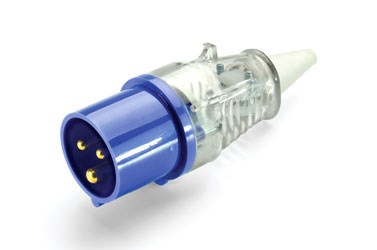A customer has asked me to install a change-over switch for a 8kW petrol generator to his house consumer unit to be used in the event of power loss from the grid.
The user manual for the generator states that it is a "floating earth configuration which means that the Neutral of the alternator is not connected to the Earth of the machine". It then mentions that you can only use 1 type of class 1 equipment or more than 1 type of class 2 equipment etc.
The generator has 2x 115V 16A CEE yellow output and 1x 230 230V 32A blue output. The generator has "overload protection which will cut off power if it exceeds the maximum energy capacity" but NO RCD.
When the generator runs I get 90V between Earth and the Neutral pins and 90V between Earth and the Line pins, this would suggest that the protective earth (centre)-tapped to the winding.
The earth pins of the CEE form sockets generator are connected to the frame and a ground stud/pin. The user manual states that BS 7971:2008 requires the frame to "be properly connected to an approved earth ground".
1. I can't see what function any earthing would provide as the N and E are not connected, if they were connected it would result in catastrophic failure of the machine. Is this correct?
2. Secondly I am correct in thinking that this generator is not suitable for connecting to a house, and he would be better off getting a new machine with correct type earthing arrangement, or are there alternative ways of connecting this generator safely?
 (this example is a WALTHER-210306CL other makes exist.)
(this example is a WALTHER-210306CL other makes exist.)